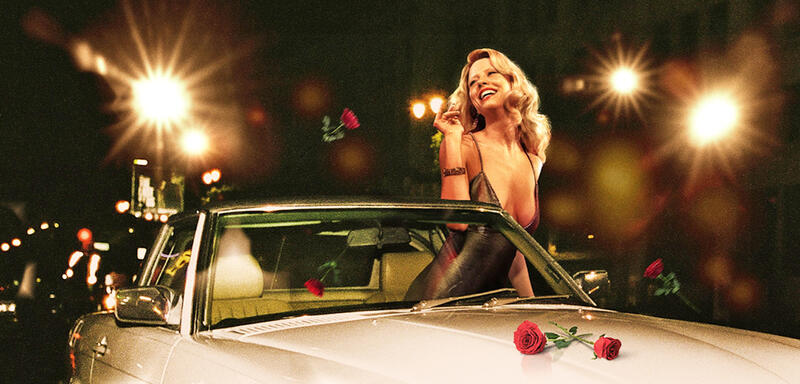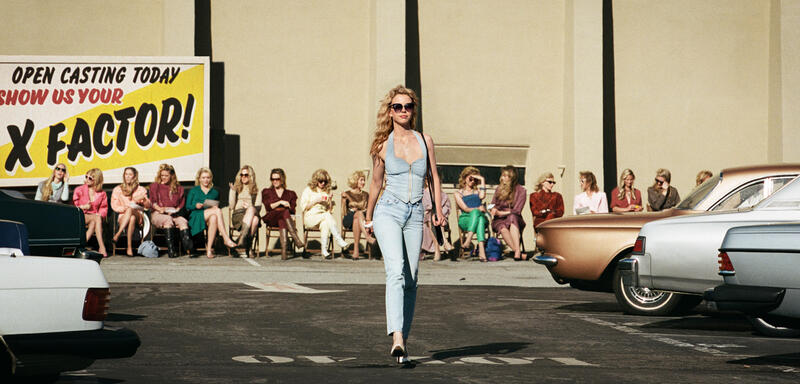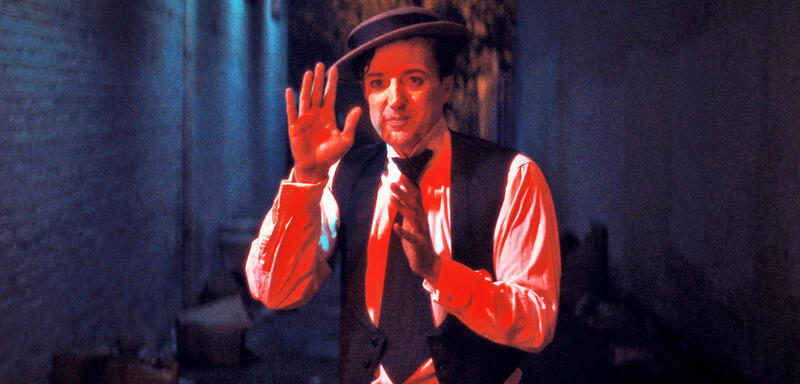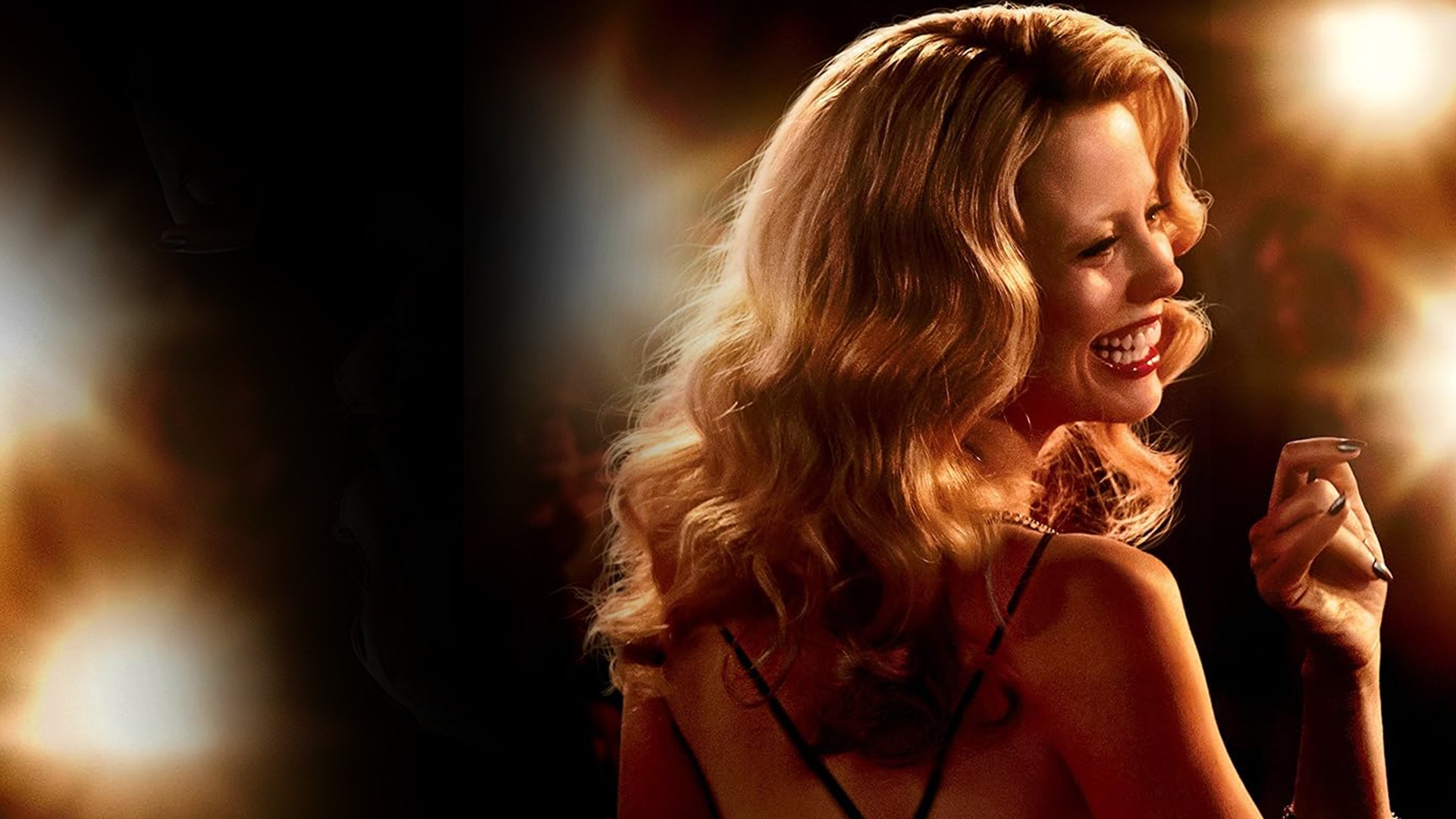With MaXXXine, Ti West delivers the brilliant conclusion to his X trilogy. In this interview, the director talks about the genesis of the unexpected horror series.
The coronavirus pandemic has been a nightmare for most filmmakers. Filming was interrupted and those involved in production were sent home. For months, there was uncertainty as to whether the industry would ever recover. However, one director was more productive than ever before in his career: Ti West, known for masterful horror films such as The House of the Devil and The Innkeepers.
However, West had not released a new film since the 2016 western In a Valley of Violence. Instead, he kept his head above water as a guest director on various TV series and genre fans feared that they had lost one of the most exciting horror voices. But then he delivered a really strong slasher in 2022 with X and followed it up six months later with the secretly shot prequel Pearl.
A remarkable success story at a time when every studio is trying to get a new movie universe off the ground. For West, it just happened. Now he is bringing the conclusion of this unusual and unexpected trilogy to the big screen with MaXXXine. To mark the cinema release, we spoke to the filmmaker about the genesis and grand finale of the X saga.
Moviepilot: How are you?
Ti West: Good. I really have to say: we’re traveling all over the world with this press tour and nothing can match the efficiency of Germany. Everything is perfectly planned and everyone is always on time. I really appreciate that. Even at the airport, when I arrived today, everything went smoothly.
I can assure you that’s not always the case.
[Laughs]. Let me live in this dream

(Ti West during the filming of MaXXXine)
Is this the first time you’ve done a big press tour like this?
No, but I haven’t done one in person for a long time. Zoom kind of ruined that. After I finished working on those three films, though, I really wanted to get out there to see how audiences reacted in theaters. You don’t finish a trilogy every day. I wanted to celebrate that – in the traditional way.
I also think MaXXXine feels like a victory lap after the success of the first two parts. Did you have a trilogy in mind from the start?
At first, the plan was to make just one movie. We did that in New Zealand in 2021. Due to the pandemic, we were one of the few productions, if not the only one in the world, that was allowed and able to shoot at that time. I realized that we were very lucky, so for me it would have been a wasted opportunity to shoot just one film. If we had the privilege that no one else in the industry had, I wanted to take advantage of it. So I looked for a way to shoot two films in a row. We had the visas and the sets. And since Mia [Goth] also plays Pearl in X, I came up with the prequel idea.
Did A24 just wave it through?
A24 was quite taken with the idea. But they were unsure whether I was really serious about it. As I was in quarantine for two weeks, I simply asked Mia if she wanted to write the script with me. Two weeks later, we submitted the finished script and got the green light. A24 said: “Okay, we’ll make the movie and if it’s successful, you can make another one.”
So Pearl was made in just two weeks?
Yes, but I already had a few ideas. I knew how Pearl’s story would end in X and that she had a terrible life on the farm before that. Just like in X, where the cinema of the 1970s plays an important role, I wanted the characters in Pearl to be influenced by the cinema of their time – the cinema of the 1910s. That also happened to be the time of the Spanish flu. I can tell you, it’s a very strange feeling to be writing a story like that while living through a pandemic yourself.
What would you have done if A24 had rejected the movie?
If A24 hadn’t liked the script, then at least we would have had a great backstory for Mia, who would have played Pearl in X either way. But luckily they waved the movie through. Last but not least, no new sets had to be built because we already had them all from X.
Is it true that you shot Pearl with the crew from Avatar 2?
They were on a break because James Cameron was finishing the movie in post-production and nobody could work anyway because of the pandemic. There was no other movie project shooting at the time – except ours. So they came and asked if they could work on Pearl. They really are the best people in the business. They were also quite happy to not just work with green screens and water tanks for a change, but to shoot a movie in a real environment.

(Mia Goth as Maxine Minx in MaXXXine)
MaXXXine feels much bigger than X and Pearl. Did you have more of a budget and more options when shooting the movie than with its predecessors?
The movie was definitely more expensive than the first two parts combined. In relation to other film productions, that’s not much, but for me it definitely was. For X, we recreated a small piece of Texas in New Zealand. Pearl was cheaper because we had already done the groundwork. Now we’re going to the streets of Los Angeles and the 1980s. The shoot is longer and more complicated. And everything costs more in the States. But you can see the difference. Let’s decorate a street here and build something here – suddenly it was all possible. But the shooting itself hasn’t changed. You never have enough time or money.
How do you shoot a scene in the middle of Hollywood Boulevard?
It’s difficult, very difficult. You have to get permission and organize everything. We had a total of four nights where we were able to close off the area where we were shooting and people weren’t thrilled. A lot of conversations were along the lines of, “Can’t we shoot this somewhere else?” And yes, that would have been possible. But it was very important to me to shoot in the belly of the beast. That’s a big part of the movie for me. Hollywood simply has its very own atmosphere.
How can I imagine that exactly? Did you close off a whole block or just a section of the street?
We only closed off a small area. We were still able to shoot large shots, such as when Maxine drives up in her car and you can see the hustle and bustle in the streets. In this shot, everything looks like we’re right back in the 80s, but the truth is: if you move just one step to the left and right, the illusion disappears and we’re back in present-day Los Angeles. This had to be planned down to the smallest detail. At the end of the day, it’s all a race against time.
You’re not only moving through the streets of Los Angeles, but also Universal Studios. How did that work out?
I really wanted to capture that studio backlot atmosphere, as if Hollywood was its own character in the movie. But first we had to get permission and sort out all the logistical issues. But filming wasn’t that difficult. That’s what the sets are for. We could just go to Western Street and use the fake New York houses. The only exception was the Psycho house, because we never usually shoot there. But our movie had a very good reason for that.
I also love the moment when she runs into the house and you think you know it from the inside, but suddenly it’s just a facade and Maxine doesn’t really have anything to hide behind. That was a really brilliant scene.
Thank you.
How does it feel to work with such an iconic setting?
Very strange. It was really surreal to shoot a movie there. We even had to get special permission for it. Not only from Universal, but also from the Hitchcock Estate. But somehow we managed it.
Were there certain conditions regarding what you were allowed to film there?
Presumably. [Laughs]. I’m sure that if we had asked, we would have had a lot of requirements. When I went into the house for the first time, I touched so many things that I probably should never have touched. Normally you only see the house from the outside when you pass by on the streetcar during the studio tour, but suddenly you’re standing in film history. This is where they filmed Psycho. No one is allowed behind the barriers. You don’t just go up the stairs and look through the window. That felt a bit illegal.

(Mia Goth as Maxine Minx in MaXXXine)
The next location that stood out for me was the Hollywood Sign. Were you actually able to shoot the finale up there?
We tried, but unfortunately it didn’t work out. They wouldn’t give us permission because it’s frowned upon in the neighborhood. And to be honest, it’s also quite dangerous to shoot there because the slope is very steep. Almost nothing is shot there, especially not when it’s a night shoot with pistol shots. I can understand that too. So we rebuilt parts of the Hollywood Sign and put them on another hill to shoot the end of the movie.
How does it feel to smear the Hollywood Sign with blood?
That was pretty cool. That scene where Bobby [Cannavale] says he could have been an actor and stretches out his bloodied hand to the Hollywood Sign with the last of his strength was very important to me. I really wanted to get that scene right. It’s one of my favorite moments in the film.
Why was that moment so important to you?
The Hollywood Sign is incredibly iconic and represents so many different things. Every character in this movie aspires to be someone significant. In Bobby’s case, it’s a cop who dreams of a big acting career, but he just doesn’t make it and then in the last minutes of his life he finds himself literally at the highest point in Los Angeles. He dies and still gets a piece of Hollywood. A very poetic moment, but also one soaked in black humor. I found it very touching and poignant.
When I look at MaXXXine as a movie about Hollywood, I’m undecided whether it comes to a bitter or hopeful ending. What note did you want the audience to leave the X trilogy on?
I think it’s an optimistic ending, although there is a lot of darkness in the story. At the time the movie was set, there was a moral panic in the US. Hollywood was condemned and condemned by many people. Of course there are the rakish corners. At the same time, it’s this unique, glamorous place. The truth behind it is universal: there is not only the good or the bad. I didn’t want the movie to be cynical or nihilistic. My intention was to tell the story of a character who tries everything to become successful and then experiences a series of absurd things. Nevertheless, you can identify with her, because probably all people wish that something were different in their lives.
To tell this story, you draw on many different types of imagery. The VHS images are particularly prominent in MaXXXine. How did you come up with this look?
I worked with different media in all three X films to tell a piece of the evolution of cinema. MaXXXine takes us into the VHS world, which has its own aesthetic. I always try to create an atmosphere that corresponds to the time, and that’s why the VHS aesthetic was crucial. In addition, you can tell a lot about the characters with the chosen medium.
What does a VHS tape tell you about the characters?
With the villain, I wanted to create the feeling of a snuff movie. He uses the equipment available to him – not high-end Hollywood cameras, but things that anyone can buy, which makes it even more sinister. As we are in a time when many different media were in circulation, the boundaries are also blurred. Suddenly the killer appears in the news and becomes a Hollywood star. I wanted to depict all of this because it shows how different show business can look. Sometimes it’s a snuff movie, sometimes a televangelist, sometimes a big Hollywood blockbuster.

(Kevin Bacon as John Labat in MaXXXine)
In your experience, which medium do you prefer for X-films?
35 mm is still the best medium for me. Even when I shoot digitally, as I did with this movie, I try to recreate the feel of 35mm, but not out of nostalgia. I want to transport the audience to a certain time and place. If a movie set in the past looks too digital, your brain notices it immediately because that technology didn’t exist back then. We are used to seeing this world in other images. Everything else feels wrong.
That reminds me of the discussions about Public Enemies by Michael Mann.
Yes, digital is the wrong medium because the movie is set in a time that looks completely different in our minds. When everything suddenly appears in razor-sharp digital images, it’s difficult to embark on a journey into the past. Of course, this approach can also work, but in most cases it does not. Public Enemies is a very good example of this conflict.
Each of the X films has a certain character that can be derived from role models from film history. With X it was the slashers of the 1970s, with Pearl it was Technicolor cinema. What inspired you for MaXXXine?
I was going for that rough, dirty Hollywood look that hardly appears in the movies anymore. Besides old news programs and documentaries, I watched movies like Vice Squad and Savage Streets. They captured exactly the feeling of 1980s Los Angeles that I wanted in MaXXXine. But I didn’t go to my crew and say you have to watch this movie and this movie. The only exception was giallo, because that’s a genre that a lot of people aren’t familiar with. So I put up some pictures of that.
Of black gloves and big eyes?
Exactly, my point was to create a few reference points so that everyone is on the same page. We’re not shooting a giallo, but if I want a close-up of an eye, everyone has to know what it should look like in the end. Nowadays this is more important than ever because many crews are conditioned to TV series. You quickly capture an image and move on. But MaXXXine had to feel like cinema and all the technical requirements had to be met to achieve this. If we’re using a zoom lens that nobody uses anymore, I have to make sure I’m working with people who know how it works.
Which scene are you most proud of?
With the psycho house, I always think to myself: “Wow, that’s such a crazy image. That we have that in our movie!” If I turned on the TV in the evening and this scene suddenly appeared – I’d look puzzled and ask myself: “What on earth is this movie?” I also love everything that happens to Kevin Bacon’s character and the image of her hand at the end. That turned out great.
The movie also ends with this amazing shot where the camera rises out of wicked Hollywood, like it’s weightless, on and on. How did you come up with that final note?
That was one of the most elaborate scenes. It was very expensive and complicated to shoot. Everyone said: “Do we really need this scene?” But I really wanted it in the movie to bring this trilogy together with a holistic ending. I wanted it to feel big and epic – we’re literally flying to the stars.
How did you shoot it exactly?
It’s a mixture of a drone shot and CGI elements. We start with the drone in the studio and keep going up until we reach a point that we can’t go beyond. Then the visual effects take over. [The VFX company] Stage 23 did a really great job with the realization. And then there were the people from Ambulance, the Michael Bay movie. That one really blew me away and I was just like, “Who was flying those drones? I really need these guys!” If they can do that, they can do the ending of MaXXXine.

(Zachary Mooren as Buster Keaton impersonator in MaXXXine)
One last thing that sticks with me: Buster Keaton. Why did you choose him for what is probably the most painful scene in the movie?
In MaXXXine there are many references to United Artists and the Hollywood stars of the time, from Theda Bara to Charlie Chaplin. I didn’t want to use someone like Chaplin, who everyone knows. So who else represents this era? Buster Keaton! He did a lot of practical stunts in his films and was way ahead of his time. I thought it was a very funny idea that someone would dress up and do what he does in the movie, only to find out that his plan completely backfires.

